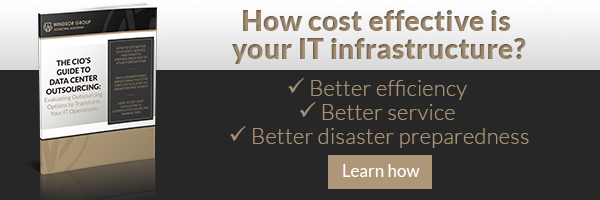 No piece of wisdom has ever been more true than, ‘the only thing that doesn’t change is change itself’, and in terms of the modern enterprise, this phrase could not more be applicable. As people, businesses, and technology advance, so too does the demand for the IT industry to keep pace. It seems that not too long ago the biggest challenge faced by an enterprise was a server failure, and now, fast-forward 10 years; it’s combating cyber threats, seamlessly integrating IT into core business functions, and increasing agility and flexibility, all while accommodating these demands more efficiently and with fewer resources than ever before.
No piece of wisdom has ever been more true than, ‘the only thing that doesn’t change is change itself’, and in terms of the modern enterprise, this phrase could not more be applicable. As people, businesses, and technology advance, so too does the demand for the IT industry to keep pace. It seems that not too long ago the biggest challenge faced by an enterprise was a server failure, and now, fast-forward 10 years; it’s combating cyber threats, seamlessly integrating IT into core business functions, and increasing agility and flexibility, all while accommodating these demands more efficiently and with fewer resources than ever before.
So, how does any enterprise keep up with such advancements? Simple, they adopt and they adapt.
Save Money
If you work in IT, I’m going to assume that you have already been given this year’s laundry list of projects to complete, along with the annual budget that doesn’t support it. If my assumption is correct, then I’m also going to assume that you are evaluating solutions that will allow you to do more with less; this is where virtualization comes into play.
Virtualization allows you to break down your data center silos by eliminating the need to have a dedicated server for each application that you are running. Rather than having a separate server for your email, your CRM, your ERP system so on and so forth, you can converge and consolidate your applications onto as few as 3 while still maintaining high availability.
Transitioning into a virtualized environment also enables significant infrastructure cost reductions. With the ability to minimize the physical space needed for server storage, the corresponding power and cooling, as well as the hardware costs associated with maintaining numerous servers and switches, you are able to reallocate your monetary resources to more pressing areas within your IT infrastructure.
Save Time & Resources
Another benefit of virtualization, and arguably the largest benefit, is the amount of time that is saved from an operational standpoint. As previously discussed, the IT department of any organization is faced with accommodating an increase in business demands. Meaning, any time that a business requires an additional resource or application to be added to its infrastructure, the IT department must implement and effectively manage it as quickly as possible.
In a non-virtualized environment, the implementation of a new application would require the purchase of a new server, creating a cumbersome process that causes a less than ideal time delay. On the contrary, virtualization allows for a quicker and less intensive application upload process, enabling your team to become more agile and flexible so that they can focus their efforts on higher priority projects. In addition to streamlining the implementation process, the time spent on maintenance is also reduced. A hypervisor, described as the software, firmware, or hardware that is used to create and run one or more virtual machines, gives you access and visibility into your applications from a single source, so that you don’t have to individually assess and maintain each application separately.
To put it simply, less time spent on implementation and maintenance equates to more resources available. Your team’s time is extremely valuable, and any way to minimize or eliminate time consuming processes will only increase their levels of productivity.
High Availability
Keeping data highly available will always be a top priority, and virtualization helps to further safeguard enterprises from operational failures. When leveraging a virtualized infrastructure, it is typically considered best practice to possess a minimum of 2 or 3 physical servers, or hosts, regardless of how large or small your organization is. The reasoning behind this is that for example, if a server were to fail, a virtualized solution would reallocate the data stored on that server onto one, or both of your remaining servers until the failed server was fixed. With that said, this sort of agility isn’t achieved solely in disastrous situations. Virtualization can also prove useful in any situation where data migration is required, such as an M&A, because it allows for data to be transferred and disseminated seamlessly from one server to another without disruption.
Virtualization is one of many IT advancements we’ve seen over the years, and its benefits to the modern enterprise have only begun to surge in recent years. With the ability to facilitate cost, time, and resource savings, all while maintaining high availability; it’s easy to see why so many companies are leveraging IT sourcing consultants to help transition from a server-driven environment into a more virtualized environment.


